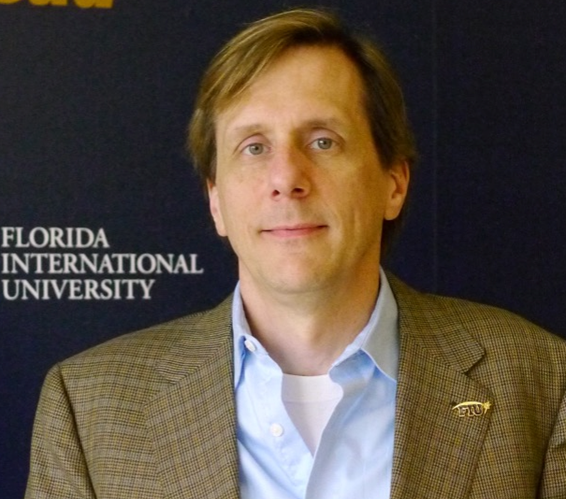 On Florida International University Week: Many students can struggle while taking a calculus course.
On Florida International University Week: Many students can struggle while taking a calculus course.
Laird Kramer, founding director of the STEM Transformation Institute professor of physics at Florida International University, attempts to find a way to change things.
Laird Kramer’s work focuses on facilitating institutional change in STEM instruction through implementation of, and research on, evidence-based educational practices. He led transformation of the undergraduate physics experience at FIU, creating more well-prepared majors through the implementation modeling instruction-based studio physics courses. Recognizing the potential for large-scale transformation, he developed multiple initiatives to establish student-centric educational paradigms across the STEM fields and carry out research on their impact. These efforts grew into the STEM Transformation Institute, a STEM education laboratory for research, development and dissemination of strategies that will transform institutional educational practices to meet the national need for qualified STEM professionals.
Creating a Calculus Course Where All Students Succeed
Calculus. Even the word can strike fear in the hearts of students.
Calculus courses have a reputation for being difficult. And a stumbling block for students who dream of STEM careers.
But this beautiful and elegant mathematics is the core of many careers in this field.
Yet, of all students who enter college hoping to earn a degree in STEM, only 40% do.
Failing calculus is a major reason.
While calculus is the study of change, the traditional ways it has been taught haven’t changed a lot.
A common approach is for professors to lecture and for students to learn outside of class, often alone in their dorm room at 2 a.m.
Is there another, more effective way to teach calculus?
My colleagues and I have been trying to answer this question for two decades. We recently led a study that showed active engagement – not lectures – help students learn more calculus — and earn better grades.
We followed 811 undergraduates who took the same Calculus I course. Half the students were in a traditional lecture-based class. The other half were part of the evidence-based active learning model that we developed.
What does this model look like?
Well, forget rote memorization and monotonous lectures. In active learning classrooms you’ll find students working together in small groups, developing and testing hypotheses. They learn to think and act like mathematicians, engineers, and scientists. After all, we learn by doing.
Think of it this way: Learning math is like learning a language. It takes practice to develop your skills and proficiency.
At the end of the course, students took a test. The results: Active learning classes had a higher average pass rate of 11%. These learning improvements also cut across majors and underrepresented groups in STEM
Apply that to the roughly 300,000 students taking calculus each year in the U.S. and it’s an additional 33,000 students passing calculus and getting closer to a STEM career.
Read More:
Establishing a new standard of care for calculus using trials with randomized student allocation
Active Learning Improves Calculus Classroom Outcomes (YouTube video)

Comments
3 responses to “Laird Kramer, Florida International University – Creating a Calculus Course Where All Students Succeed”
These educators often miss (quite often deliberately) the key ingredient: those students, although in college, need basic training in Algebra, before understanding calculus. They improved the scores in calculus, often because students finally understand Algebra and can put calculator away and do calculations.
As a high school math teacher, I have known for at least 20 years that students learn best when they are actively engaged. Are you telling me that this college professor just now figured this out?
As a non-traditional graduate student…WELL DUH ! 👍🤓👩🏻💻📚At least the reality of active learning has finally penetrated the academic elite!